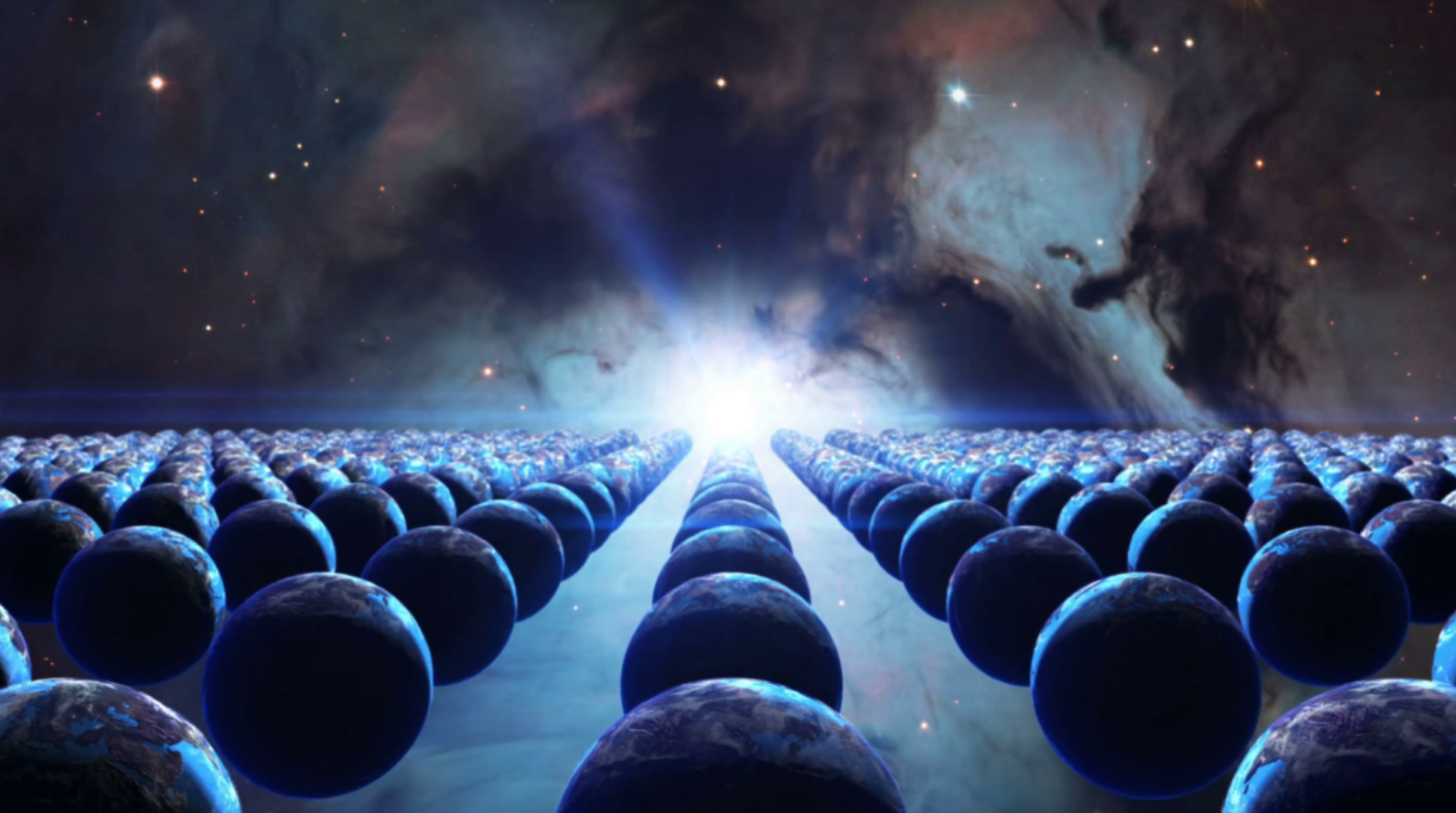Image 1:)
How many universes exist? The fact is that there is only one confirmed universe in space. The scattering of light in our universe covers the possibility to see other universes. And the light pollution from galaxies and stars is covering those universes under that light.
So we cannot confirm the existence of those other universes by using straight observations. So maybe the gravitational effect of the other universes could uncover them. In that method, the changes in the form of the visible universe would uncover those other universes. But the fact is that we don't know how much dark matter is outside the visible universe?
And we don't know are the particles in other, still hypothetical universes have the same fermions and bosons, etc., that they are in our universe. There is the possibility that the other universes are dark to us.
Or maybe they have not existed. But the fact is that proving the existence or denying it is impossible in this kind of question. So are these kinds of theories scientific? Yes and no. Those theories are so-called philosophical- half-scientific theories. Logically thinking there should be another universe.
*********************************************************************
Fractal universe theory
image 2:)
Have you ever heard so-called "fractal theory"? The idea of the fractal theory is that universe is like a fractal. In fractals, the same form repeats again and again, on a larger scale. In that theory, the material acts in the material universe in the same way as fractals. So that means the universe could be part of the disk-shaped hyper structure called the local group of universes.
And if we continue the fractal theory or fractal universe theory far enough the universe would be part of the groups and supergroups of universes. In that theory, the same form continues forever but on a larger scale. In the fractal theory, the universes are forming similar forms to stars in galaxies and galaxies are forming in the universe. So why universes cannot form similar structures?
*********************************************************************
We can think of the universe as one galactic hyper-group.
First came galaxies, then galaxy groups, and then galactic supergroups. So why universes cannot form similar structures.
If we are following a cosmological timeline, we first saw galaxies, then we realize that the Milky Way is only one galaxy that was a member of the galaxy group. Then cosmologists understood that galaxy groups were part of supergroups.
And supergroups are part of a larger entirety. Finally, we see that all visible galaxies are part of the entirety called the universe. So the next logical step is that similar structures repeat on a larger scale. That means the universe is part of the group of universes and that group of universes is part of a supergroup of the universe. So is the universe part of the structure called hyper-universe?
But like in infinity theories proving those theories is difficult or even impossible. Proving that something is infinite requires infinite time. So we can handle only things involved in a limited time. The timeline can be long and take billions of years. But anyway timeline in those cases is finite.
Proving this kind of theory true or false is not possible. The cosmic background, so-called three-kelvin radiation that is forming when the universe expands along with dark energy are things that could help to prove that some particles are not visible. Dark energy is wave motion that rips the universe into pieces.
Because the wave motion cannot form from emptiness there must be some kind of source for that energy. And one explanation is that the source of dark energy is outside our universe. Or, excuse me, outside our visible universe. Most of our universe is invisible to us.
https://en.wikipedia.org/wiki/Fractal
https://en.wikipedia.org/wiki/Multiverse
Image 1:) https://jimmyakin.com/2019/01/what-the-in-the-world-is-the-multiverse.html
Image 2:) https://en.wikipedia.org/wiki/Fractal
https://miraclesofthequantumworld.blogspot.com/






No comments:
Post a Comment
Note: Only a member of this blog may post a comment.